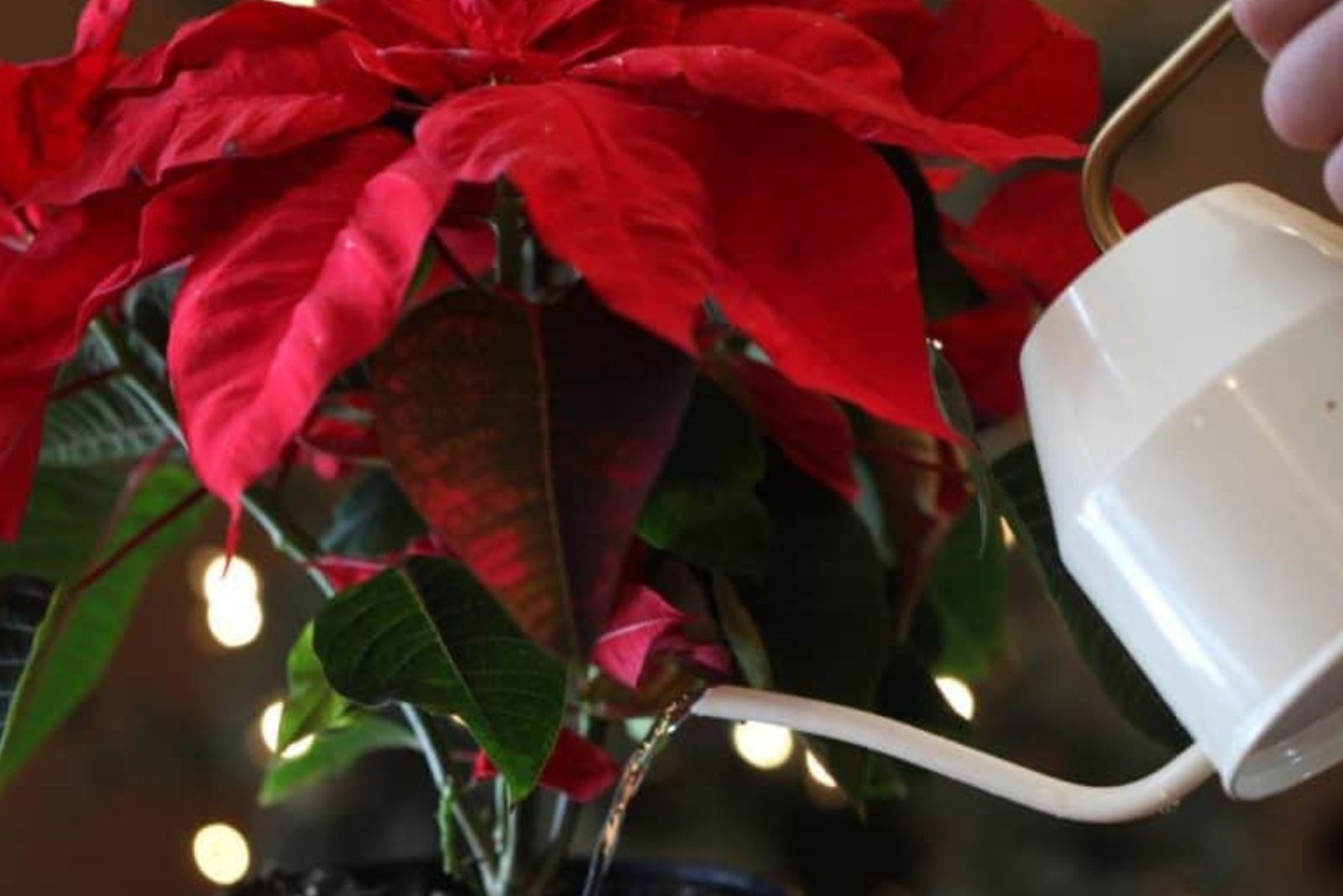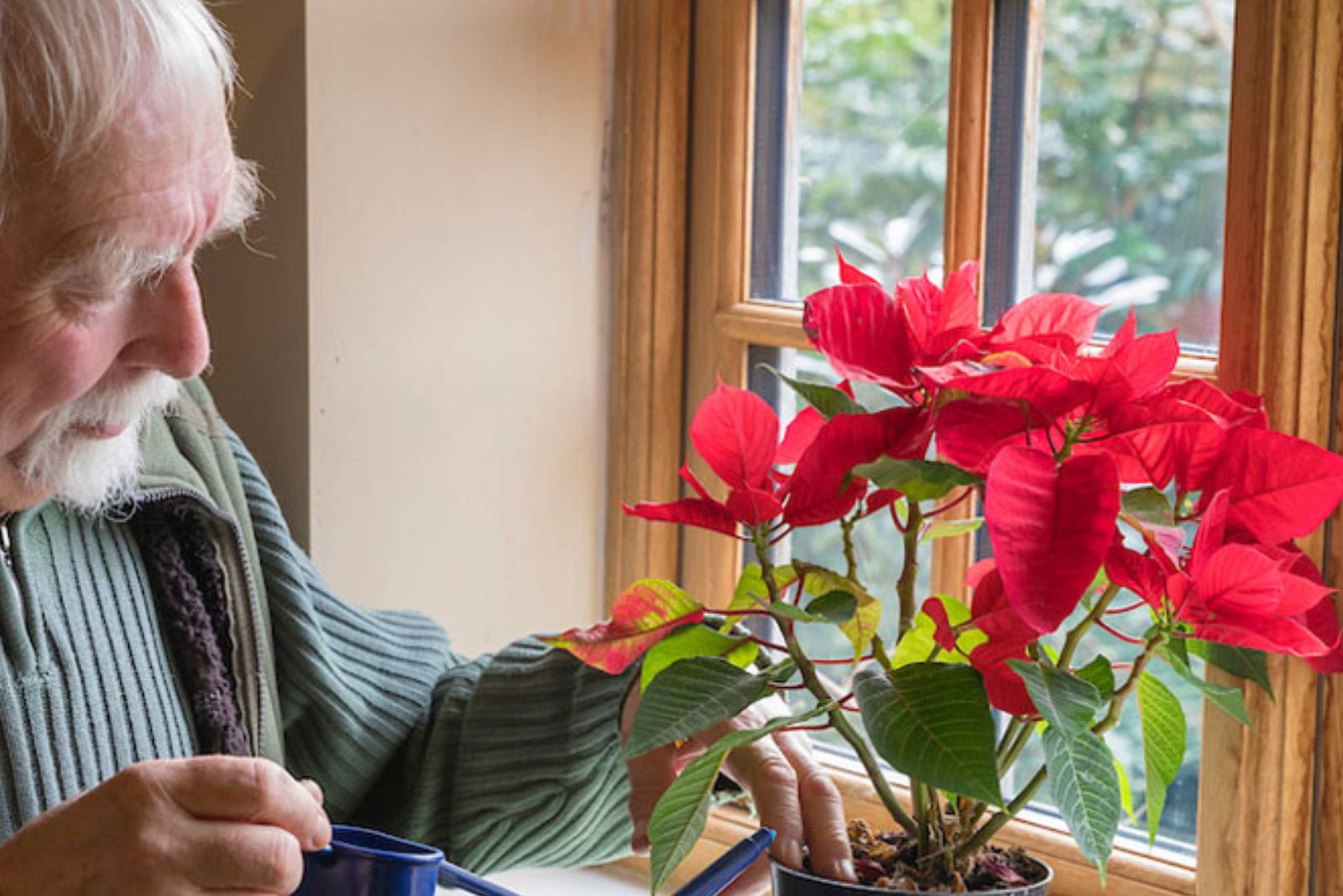Poinsettias are trademarks of every holiday season. These tropical plants produce red, white, and pink flowers that can make any room look more vibrant and lively!
Since we are talking about tropical plants, you might already know that their watering needs are quite tricky to satisfy. Most gardeners end up either giving them too much or too little water.
Luckily, we are here to prevent that from happening!
In this article, we are going to talk about how and when to water a poinsettia plant.
Let’s get started! 🙂
When Should You Water A Poinsettia?
Timing is crucial when it comes to watering your poinsettia. They need consistently moist soil but don’t like sitting in a soggy one. What you can do is check the moisture of the soil before watering sessions.
Simply touch the soil surface to see if it feels dry. If the topsoil is dry, then go ahead and water your poinsettia. If not, postpone watering for a few days.
Too much moisture can lead to overwatering and root rot. To avoid these issues, provide good drainage by growing the plant in well-draining soil and a container that has drainage holes in the bottom.
Related: 6 Steps For Making A Poinsettia Flower Again
How To Water Poinsettia The Right Way
When you first buy your poinsettia, it will often come in plastic or molded containers that are wrapped in decorative foil. Please keep in mind that you should remove the foil, especially when watering.
Once you’ve removed the foil, put the container in the sink (or shower if it is too large). Start watering your plant at its base and avoid getting the leaves wet as they can attract various fungi.
Let the water drain for a few minutes and put your poinsettia back in its original spot. To help maintain adequate drainage, place a saucer or tray underneath the container.
In case you keep the foil around the container, poke some holes in it so that the water doesn’t pool inside. However, it’s better to remove the foil altogether.
Your Poinsettia Needs Watering When…
• The soil is completely dry
• The leaves are dropping off
• The edges of the leaves turn brown and crispy
• The temperatures rise so the soil dries quicker
Related: Is Watering Plants With Tea Such A Good Idea? Find Out Here!
How To Tell If Your Poinsettia Is Overwatered
Avoiding overwatering is as crucial as providing enough moisture. If your plant’s leaves start to turn yellow and mushy, then you might suspect overwatering. Touch the soil to see if it feels wet. If so, let it dry a bit.
If you notice that there’s a foul smell coming from the soil, you should check the roots to see if they’ve started rotting. Root rot is hard to fix, but you can repot the plant and get rid of rotting parts of the roots.
Repot your poinsettia in a new container and fresh soil. Let your plant adjust and water only when the top few inches of the soil feel dry.
Knowing when to water your poinsettia keeps it looking festive and cheerful. By watering at the right times, using the correct methods, and paying attention to your plant’s cues, you will ensure a healthy and vibrant addition to your holiday decor!
Also read: 17 Perfect Plants For Holiday Decorations



